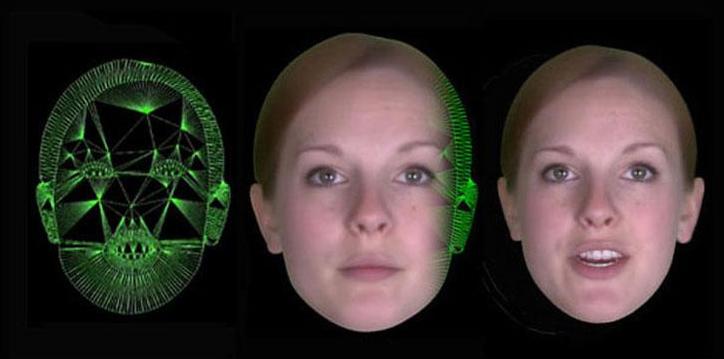Cambridge boffins invent “Red Dwarf”-style virtual assistant
Hollyoaks actress lends face to messaging app


Scientists at Cambridge University have created a virtual "talking head" which can express a full range of human emotions and could be used as a digital personal assistant, or to replace texting with "face messaging".
The talking head, called Zoe, is named after the actress Zoe Lister, whose face the assistant is based on. Lister is probably best known for her portrayal of Zoe Carpenter in Channel Four youth soap Hollyoaks.
Zoe is the result of research carried out by researchers at Toshiba's Cambridge Research Lab and the University of Cambridge Department of Engineering.
The boffins said that Zoe is "the most expressive controllable avatar ever created, replicating human emotions with unprecedented realism."
"The lifelike face can display emotions such as happiness, anger, and fear, and changes its voice to suit any feeling the user wants it to simulate. Users can type in any message, specifying the requisite emotion as well, and the face recites the text," the University said.
Students have already spotted a striking resemblance between the disembodied head and 'Holly', the ship's computer in the sci-fi sitcom, Red Dwarf. Zoe is also remarkably data-light. The program used to run her is just tens of megabytes in size, which means that it can be easily incorporated into even the smallest computer devices, including tablets and smartphones.
"This technology could be the start of a whole new generation of interfaces which make interacting with a computer much more like talking to another human being," said Professor Roberto Cipolla, from the Department of Engineering, University of Cambridge.
Get the ITPro daily newsletter
Sign up today and you will receive a free copy of our Future Focus 2025 report - the leading guidance on AI, cybersecurity and other IT challenges as per 700+ senior executives
"It took us days to create Zoe, because we had to start from scratch and teach the system to understand language and expression. Now that it already understands those things, it shouldn't be too hard to transfer the same blueprint to a different voice and face."
The prototype is still in early stages of development. The researchers gave no indication of when such technology might be implemented in phones or other computing devices.
Rene Millman is a freelance writer and broadcaster who covers cybersecurity, AI, IoT, and the cloud. He also works as a contributing analyst at GigaOm and has previously worked as an analyst for Gartner covering the infrastructure market. He has made numerous television appearances to give his views and expertise on technology trends and companies that affect and shape our lives. You can follow Rene Millman on Twitter.
-
 Bigger salaries, more burnout: Is the CISO role in crisis?
Bigger salaries, more burnout: Is the CISO role in crisis?In-depth CISOs are more stressed than ever before – but why is this and what can be done?
By Kate O'Flaherty Published
-
 Cheap cyber crime kits can be bought on the dark web for less than $25
Cheap cyber crime kits can be bought on the dark web for less than $25News Research from NordVPN shows phishing kits are now widely available on the dark web and via messaging apps like Telegram, and are often selling for less than $25.
By Emma Woollacott Published